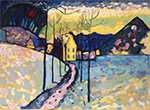Significant World Writers
Grp 5: Fear

"Even a small change in the weather made Mrs. Cope thankful, but when the seasons
changed
she seemed almost frightened at her good fortune in escaping
whatever
it was that pursued her" (247).
Flannery O'Connor's "A Circle in the Fire" (1953; 1955)
Flannery O'Connor's "A Circle in the Fire" (1953; 1955)
- as a satiric cartoonist for the school papers at her high school and college, Flannery O’Connor often set up a pair of physical mismatched women, one stocky and one thin. She has done this again in “A Circle in the Fire,” with the “small and trim” Mrs. Cope and “large” Mrs. Pritchard with “steady ferreting eyes” (232). Do these two characters’ respective body types signal anything important about their different personalities, or are their respective temperaments in no apparent way related to their morphologies?
- what do the “blank sky” and “fortress wall” of trees each symbolize (232)?
- Mrs. Cope habitually responds to Mrs. Pritchard’s pessimism with positive observations, and appears to be quite thankful for all the ways in which she has been blessed (232, 234-35). Is this idealism a façade, or an accurate representation of the way she sees the world?
- is Powell’s hunger primarily physical in nature?
- does Mrs. Cope’s optimism outweigh her fear?
- does the story, as a whole, suggest that Mrs. Cope is wrong to claim the woods as her own?
- the sun appears a few times throughout the story, often radiating a light that looks ready to light the woods on fire. Is the woods’ fate divinely ordained, or a product of simple scoundrelism?
- consider the unnamed child’s comic aggression; does her response to the boys’ presence match, tonally, the tenor of the entire story, or provide relief/contrast from the tale’s dominant tone?
- parse Mrs. Cope’s claim that she has “been nice to” the three boys (246).
- why might O’Connor has chosen this story’s particular title, and why conclude the tale with a barely veiled reference to Daniel 3:13-30?

Winter Landscape (1909)
Wassily Kandinsky
Dr. Paul Marchbanks
pmarchba@calpoly.edu
![]()
